We are seeing a lot of interest in Asian fabrics,
in particular those from the Orient-
mainly those with
Chinese and Japanese inspired patterns.
But, what makes a pattern Oriental or Asian?
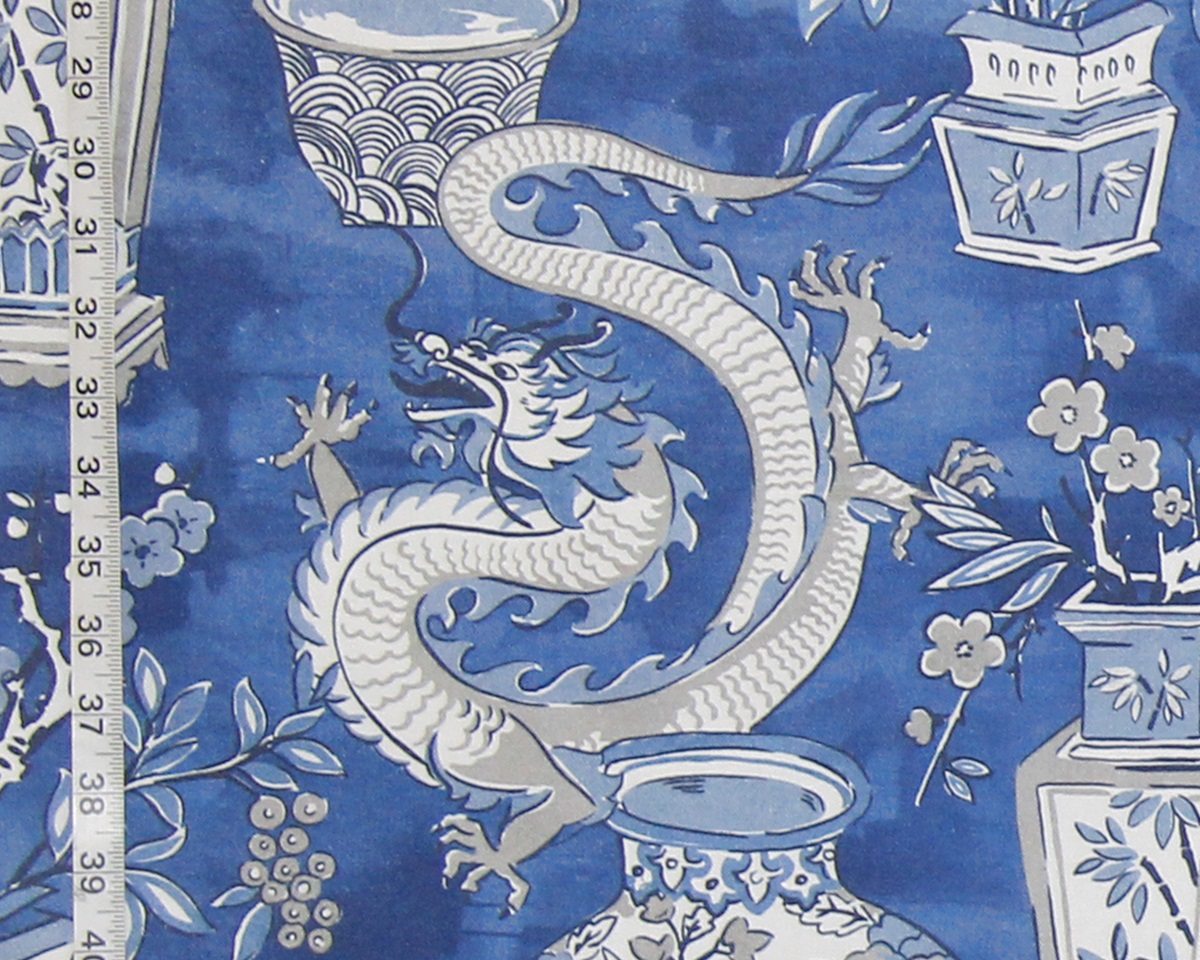
Both fabric designers and decorators use association
to give a sense, or idea, of a subject.
Put an Eiffel Tower on a fabric,
and the association is Paris or France.
Add a pagodas or a dragon to a fabric,
and the association tends to be the Orient,
even though both are present in many cultures.
The point, from a decorator’s point of view, is to give the idea,
the sense or feeling of something specific,
for the total decorating scheme that they envision.
They are not trying to give a correct, scholarly visual treatise on a subject.
This can be very irritating for those that have more knowledge.
And, I totally understand this irritation!
I don’t know how many ocean fabrics we have had with gold fish in them.
This drives me nuts!!!
Gold fish are not salt water fish- they are a fresh water fish!!!
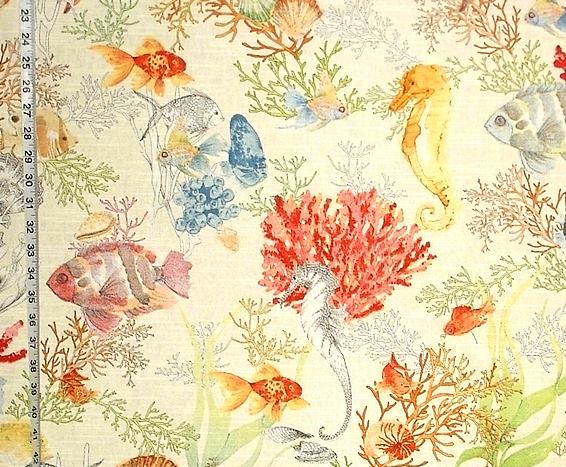
But, take a look at the reef fabric- goldfish-
next to seahorses!!!
I was annoyed with Thomas Paul as well!
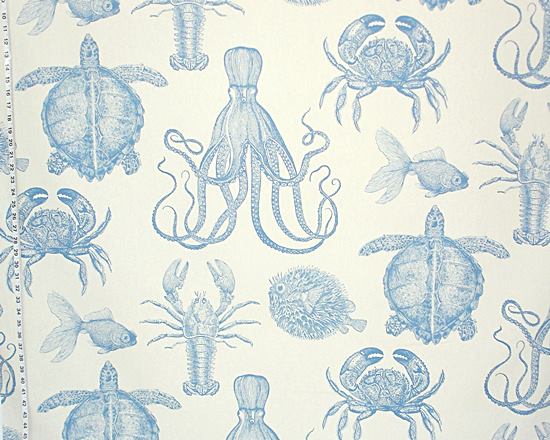
One year a pattern came out, and it had a lot of shells, etc.
And one was a sea urchin- which was drawn upside down!
I didn’t buy it.
The rep wondered why.
I said, the urchin is not correct!
He could not believe this matters,
but these things do.
I am not alone in this.
I have one customer who will not buy anything with a crab on it-
she says people think they look like bugs,
and won’t buy her products!
Here is an older pattern showing a fox hunt,
with riders blowing horns.
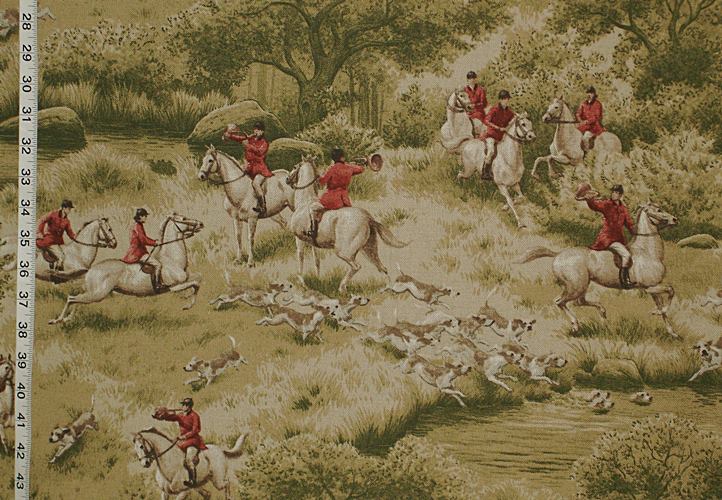
A woman in England,
upholsters the tops of stools with horse patterns.
She would not buy it.
The horn was a French horn,
not one that would have been used in England when on a hunt.
From the fabric designer’s point of view,
the horn was negligable…
from an expert’s point of view
it was an important detail.
Another case in point had to do with an older Waverly horse pattern-
Polo Promenade.
( I always thought this was an odd name for the pattern,
as it had nothing to do with polo! )
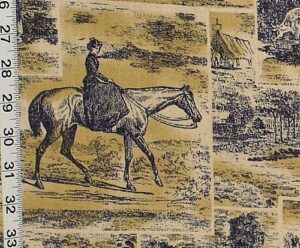
The woman riding side saddle has her skirt falling to the right side of the horse.
Most side saddles are built so that the riders legs are on the left , or near side, of the horse,
with the skirt of the habit
falling to the left as well.
I was sent a vehement message on how wrong this pattern was.
But, I had done research on this,
and while rare,
there was the odd saddle,
called an off side side saddle,
where the legs of the rider, and the skirt of the riding habit,
went to the right, or off side, of the horse.
And, there are people who now are making them,
due to people with hip problems.
So, we all have our foibles!
And, those with knowledge about a subject can be picky.
______________________________________
And, what, might you ask is the point of this?
This is mixing of elements for textile designs is nothing new.
Whether it was because early print makers and weavers were intrigued by
things they had not seen before,
or because they were targeting a certain market,
fabric designs have always drawn on a wide variety of designs elements
to produce interesting patterns-
whether correct or not.
Indienne fabric patterns are a good example of this.
The Indienne Tree of Life patterns used both
European flowers and patterns,
as well as Asian and Indian flowers and patterns.
This blending of cultural things resulted in new and exciting designs.
You can read about the development of textile patterns here:
French Toile Fabrics- A Look at Patterns
______________________________________
When it comes to Asian and Oriental fabric patterns,
there is a lot of cross over from the many different cultures that exist there.
Things we associate with a country or culture
may have a basis in several cultures,
each with their own unique characteristics.
For instance, dragons, Foo Dogs, and pagodas,
are common across several different cultures,
but each of these have details that vary due to their origin.
A fabric artist doing a rendering for a pattern
might not respect these differences.
And, the decorator working on a project
might not research the authenticity of the details of a pattern.
One has to know about a subject
to be able to to understand the naunces of a pattern.
And, unless one has some familiarity with a subject,
one really can’t judge how accurate a pattern is.
That said, I don’t feel most fabric companies or home decorators
are concerned about pattern accuracy.
So, every year fabrics come out,
and are used in home decorating,
whether correct or not.
It is a personal preference as to what one wishes to incorporate
into one’s decorating scheme.
And it is up to each person to decide how accurate you want your rooms to be.
Here are some of the patterns that we have at the moment.
For dragon patterns we have three-
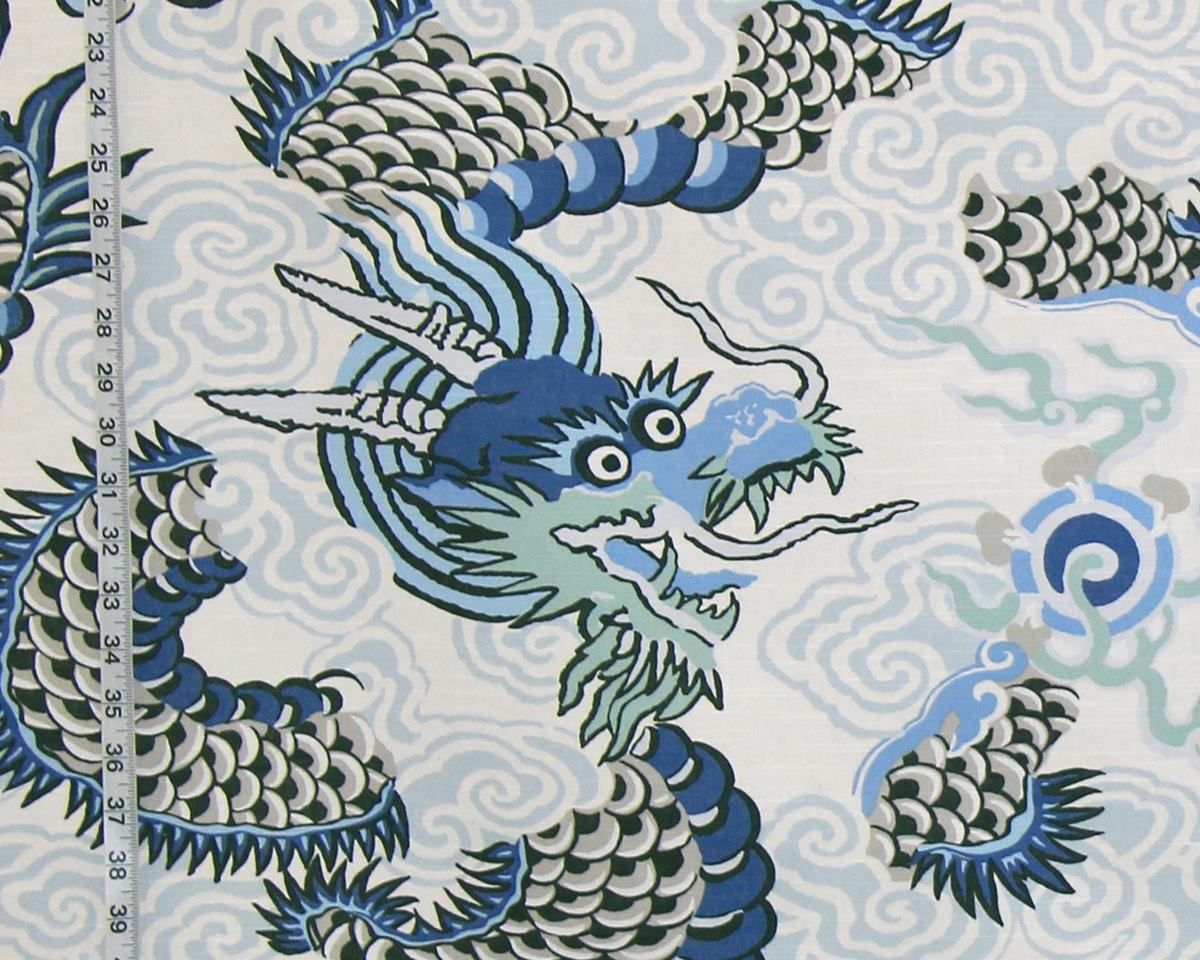
The blue dragon pattern shows the dragon emerging from a
swirl of clouds.
It is also available in bold red orange.
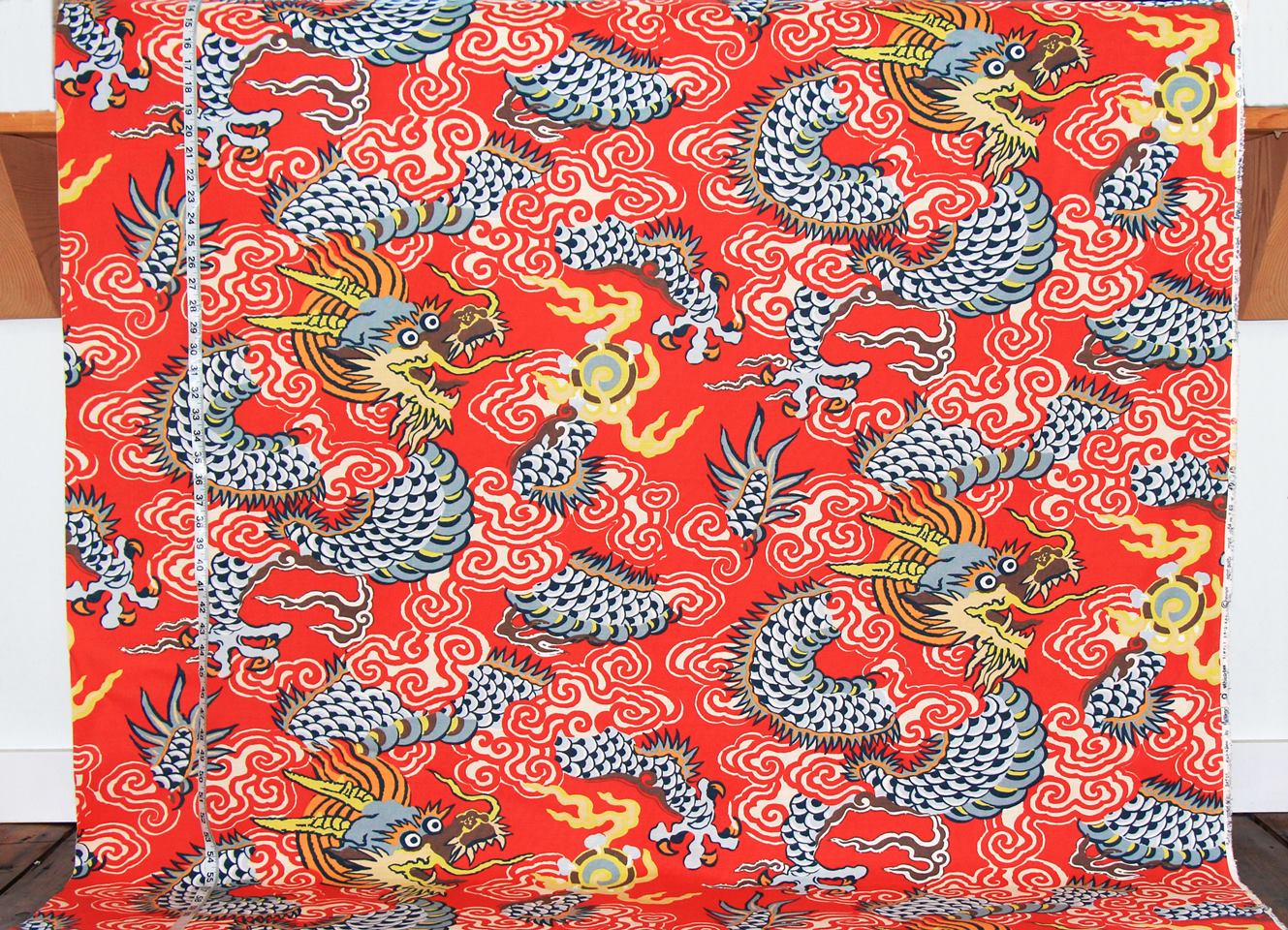
The third dragon has the interest of
both the dragon and antique porcelains.
I like the tonal blue background.
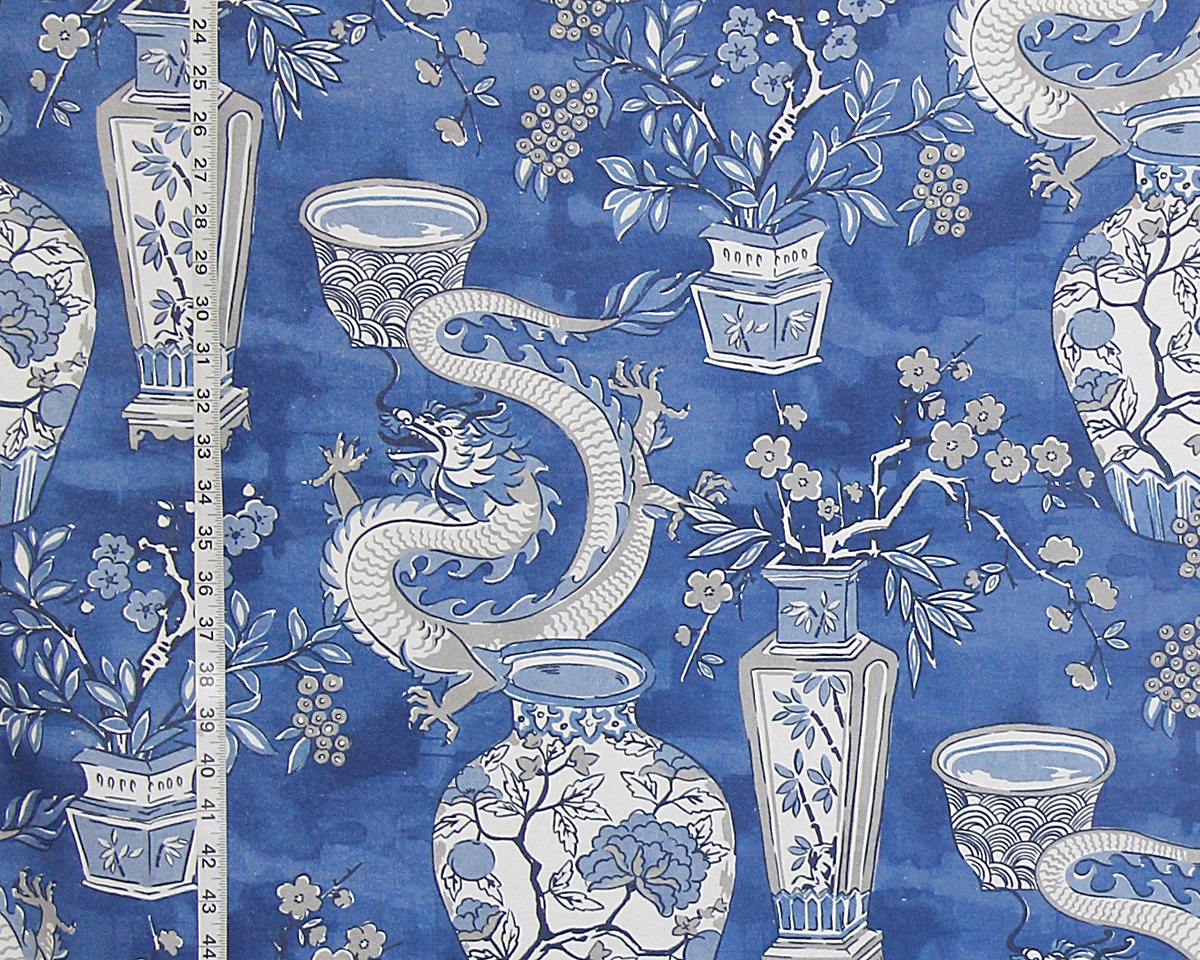
We have one Foo Dog fabric.
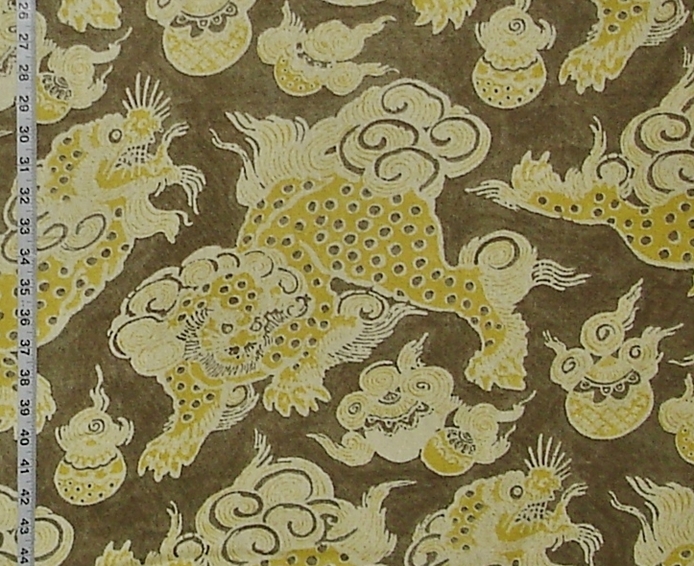
And there are two lantern patterns.
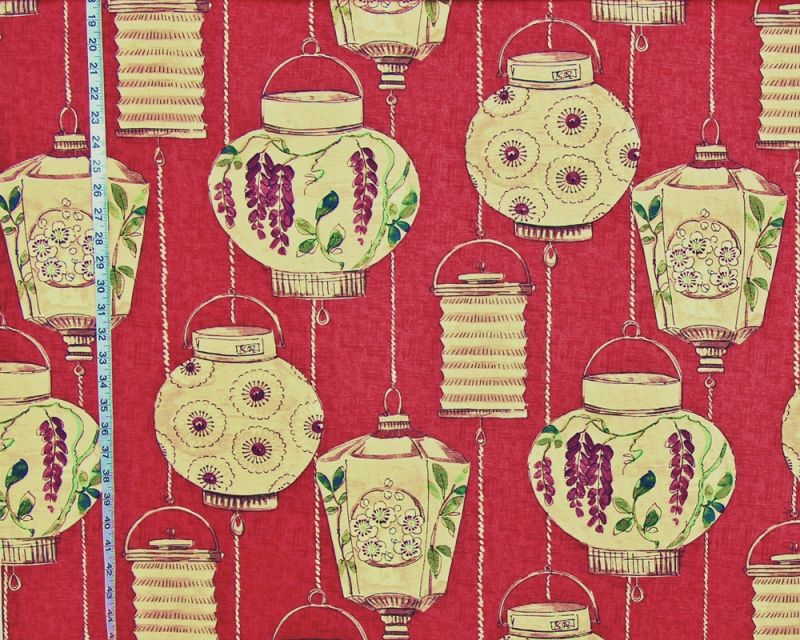
This is also available in a deep green,
and my favorite,
a taupe brown.
For me,
fabrics tell a story.
When I look at the taupe one,
I see fall fabric,
and I envision a wooden walk way,
along the side of a traditional Japanese house.
It is a chilly evening, just past dusk.
The lanterns are lit, and swaying in the wind.
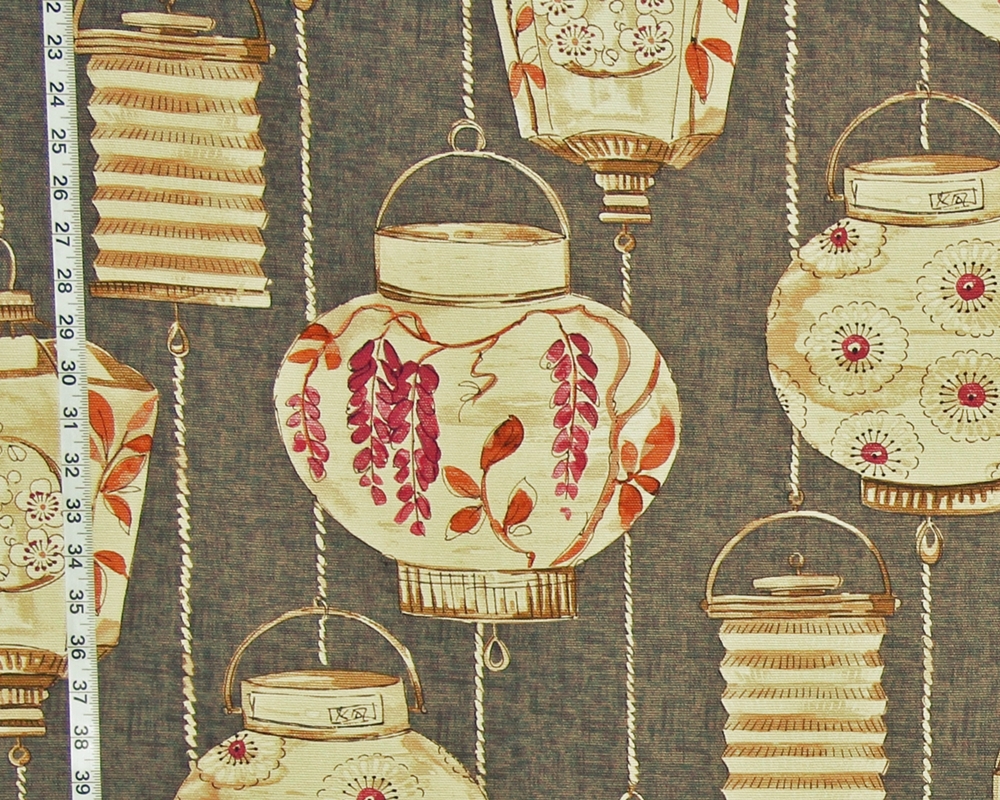
The second pattern is very different!
While these look like traditional lanterns,
they are actually wind chimes.
It is lovely!
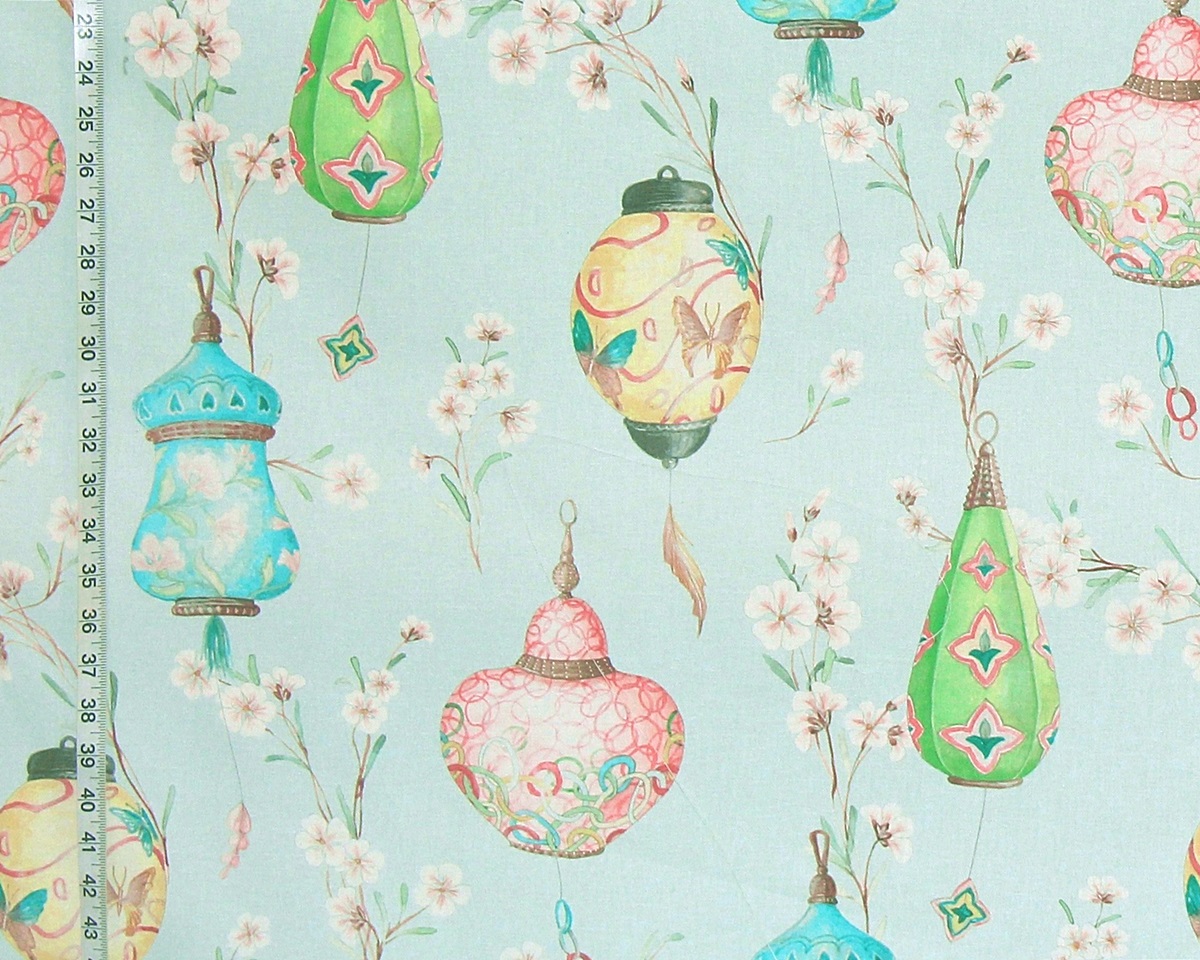
While antique porcelains are used fairly commonly in Asian fabric patterns,
they often have a European feel,
as many porcelains were being produced for Europeans.
One of the fabric has a wide variety of
antique porcelains.
We have it in a colored version,
and in an all blue version.
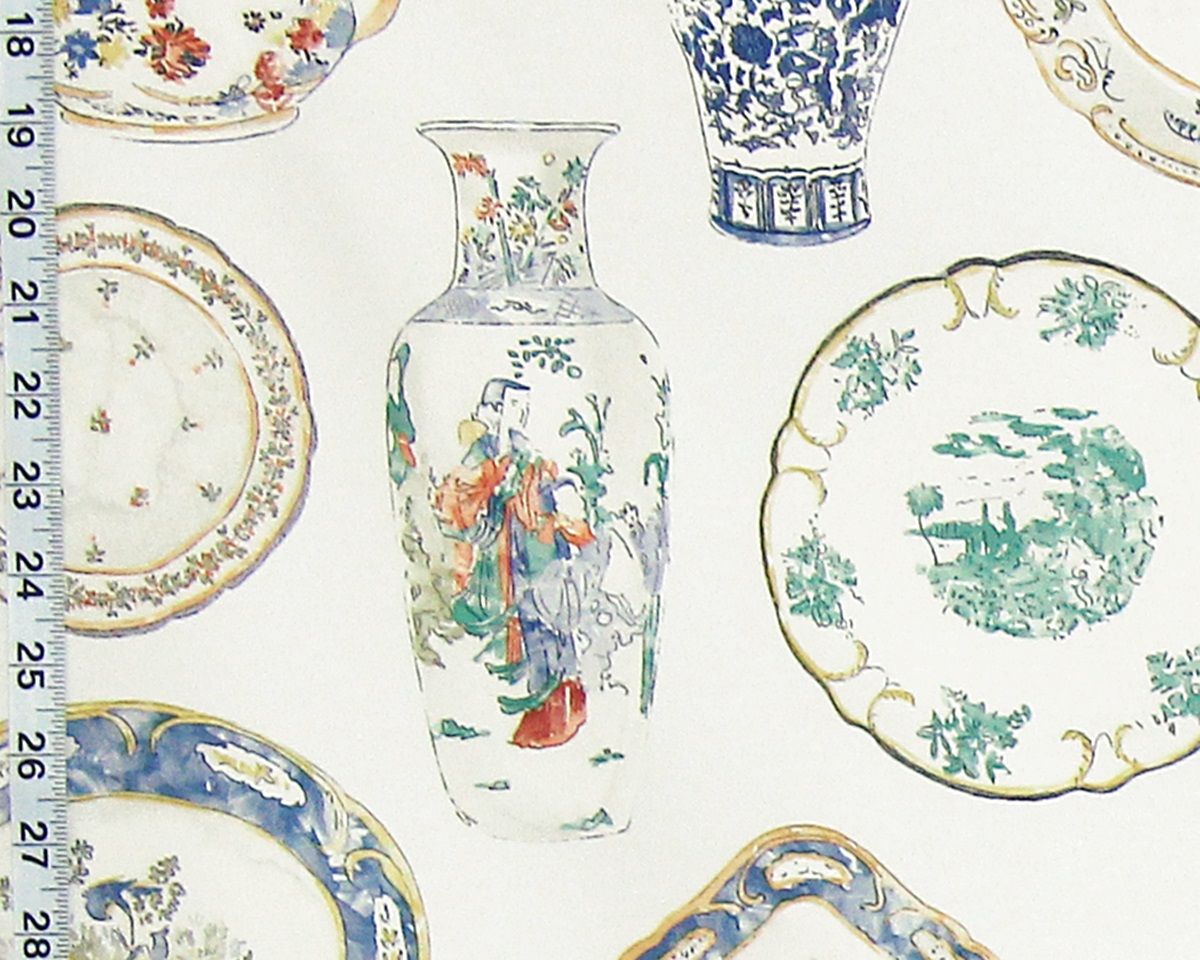
One of the most popular design elements
used in Asian themed fabrics is the pagoda.
While it may have an association with China or Japan,
pagodas are important in many different cultures,
and prevalent in many different countries.
The two fabrics we have at the moment are very different.
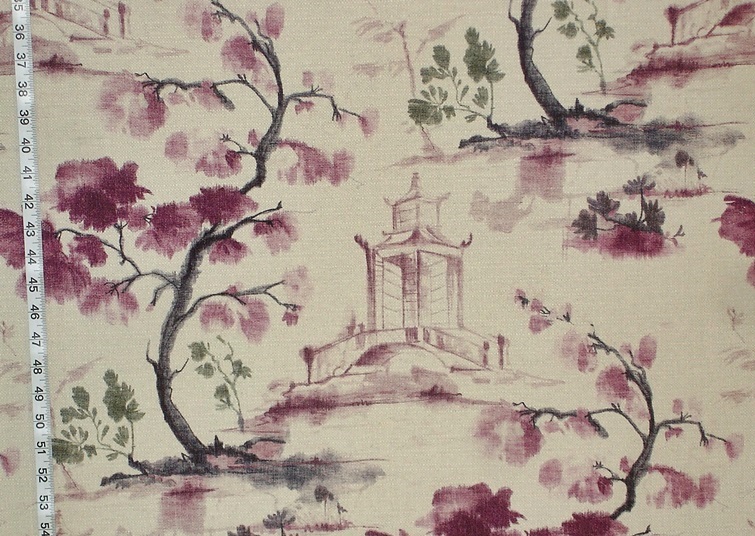
While the purple pagoda fabric has a graceful presence,
the tropical toile pagoda fabric
has the feel of a mid-century pattern.
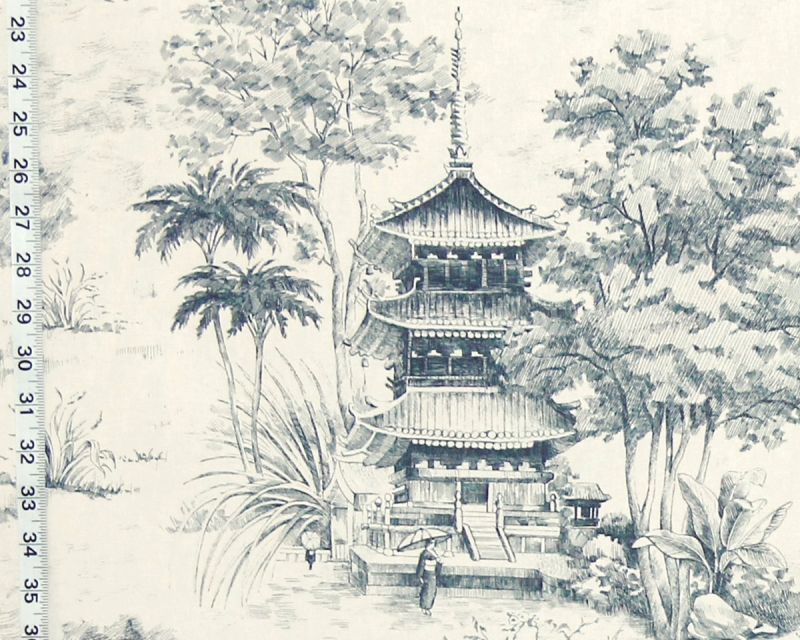
The most intricate of the Asian patterns
is the Imari fabric.
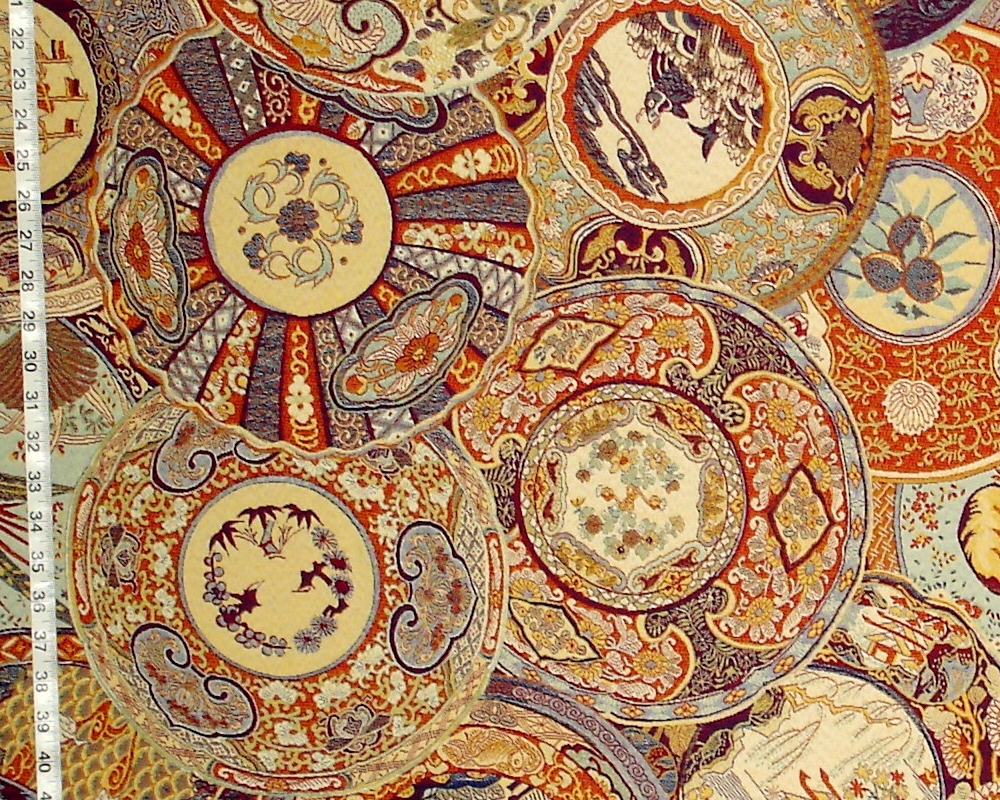
This is a woven upholstery fabric.
It is filled with color and design!
For other patterns see the
________________________________
